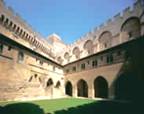
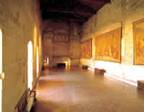
Wednesday, August 27, 2008, 09:00 - 16:00
CALL FOR PAPERS
Under the auspices of the University of Avignon, the next SSCLE conference is planned from 28 to 31 August 2008 in Avignon (southern France). The general theme will be The Papacy and the Crusades. Within this context, the conference also commemorates the Albigensian Crusade, and, as in prior conferences, members of the Society are encouraged to present papers and sessions on any aspect of the rich spectrum of themes dealing with the crusades and the Latin East. The registration fees include a one-day post-conference excursion in the Comtat Venaissin. In addition, for additional fees, there will be a walking tour of Avignon (before the conference) and a three-day tour, to be organized for those who would like to visit sites in the Albigensian region (not final).
The academic committee includes: Michel Balard, Helen Nicholson, Norman Housley, Luis García Guijarro, and Sophia Menache.
Our secretary, Sophia Menache, will be glad to receive proposals for lectures and sessions (menache at research.haifa.ac.il).
The organizing committee of the forthcoming SSCLE congress would like to remind the members of the Society that the deadline for submissions to the Avignon conference is 1 April. Those members who have not as yet sent their proposals are kindly requested to do so.
As to registration, please note that the registration fees as well as some deposit for the hotel reservation will be charged only by May, so those who already sent their proposals which have already been accepted are kindly requested to fulfill their forms and send them to our tourist agent, Magali Mizrahi.
Deadline for submission of proposals: 1 April 2008!
We are looking forward to see you in Avignon.
PRELIMINARY SCHEDULE
Wednesday, August 27, 2008
Optional Tour A: the pre-conference walking tour, Highlights of Avignon (09:00-16:00)
16:00 - Registration and distribution of Conference Material
18:00 - Plenary Session
20:00 - Welcome Reception
Conference Program (PDF, 100 kB)
Thursday, August 28, 2008
All day: Sessions (All sessions will take place at the University of Avignon)
Friday, August 29, 2008
All day: Sessions
Saturday, August 30, 2008
All day: Sessions
Evening: Farewell Dinner (optional)
Sunday, August 31, 2008
One-day tour of Carpentas, Vaison la Romaine, and Cavaillon
Monday, September 1 - Wednesday, September 3, 2008
Optional tour B: Carcassonne area (2 nights/3 days)
GENERAL INFORMATION
Venue
The Conference will be held at the University of Avignon.
Language
The Conference will be conducted in English and French.
Avignon - General Information
Can be found at http://www.ot-avignon.fr/pages-en/home.htm
How to get to Avignon
By Car
A7 and A9 motorways
National highways n° 7 and 100
By Plane
Avignon Caumont airport
tel + 33 4 90 81 51 51
8 km from Avignon
Direct flights from Paris Orly west 4 times a day, with 23 connections to other French regions, European cities and overseas territories.
By Train
The Avignon TGV train station, Quartier de Courtine
Direct TGV from Paris (2h40), Roissy-Charles de Gaulle airport,
Lille, Nantes, Rouen, Metz, Montpellier, Geneva, Brussels, Lyon, Marne la Vallée, Rennes, Strasbourg and Toulouse
The Avignon centre-city train station, which is located on Blvd. St Roch, receives regional trains, inter-city trains, the Paris TGV (3h20), and (in summer) Eurostar Avignon-London.
There are bus connections from the station to other parts of the city.
Climate
The weather in August is sunny and warm during the day and cool at night.
Temperatures range from 25°C to 32°C (77° F - 89°F).
Visas
Please check with your travel agency. A letter of invitation will be issued upon request to registered participants to allow them to apply for a visa at the French Embassy in their country.
Currency
The official currency is the EURO. The exchange rate (as of Aug 7, 2008) is:
1 Euro = US$ 1.53
Universal Currency Converter: http://www.xe.com/ucc
Secretariat and Official Travel Agent
Diesenhaus Unitours Israel Ltd.
P.O.Box 57176 Tel: 972-3-5651313
61571 Tel Aviv Fax: 972-3-5610152
E-mail: meetings@diesenhaus.com
Israel
REGISTRATION FEES
Before May 1, 2008 |
After May 2, 2008 |
|
| Participant | EUR 160 |
EUR 200 |
| Student | EUR 80 |
EUR 100 |
| Accompanying Persons | EUR 40 |
EUR 40 |
| Farewell Dinner | FULL |
FULL |
Participation fees include: Admission to conference sessions, conference kit; welcome cocktail, coffee during breaks, and a one-day tour to Carpentas, Vaison la Romaine, and Cavaillon.
Accompanying Persons fees include: Welcome Cocktail, and one-day tour.
Cancellation Policy
Refunds will be made as follows: If the cancellation letter is postmarked before July 20, 2008 refund less EUR 50. Thereafter - no refund will be made.
NOTE: The SSCLE regrets that no funding is available to support travel and other costs of participants.
The application form for the conference will include a line for payment of 2008 dues "if not already paid," and a box to tick should the applicant be enrolling as a member of the SSCLE for the first time. That notwithstanding, members are urged to renew their subscriptions at the usual time, between October 2007 and January 2008.
TRAVEL & ACCOMMODATION
Rooms have been reserved August 27-31, 2008 at the following hotels:
| Hotel | Category | Double Room | Per person in double room | Single room | Triple room | Distance from University | |
|---|---|---|---|---|---|---|---|
|
3 star |
FULL |
FULL |
FULL |
Not available |
10 min. walk |
|
Ibis Pont de l'Europe |
2 star |
EUR 84 |
EUR 42 |
EUR 76 |
Not available |
20-30 min. walk |
|
Kyriad |
2 star |
FULL |
FULL |
FULL |
FULL |
20 min. walk |
|
| Medieval | 2 star |
FULL |
FULL |
FULL |
FULL |
15 min. walk |
|
| Hotel L'Horloge | 3 star |
EUR 123 |
EUR 109 |
15 min. walk |
Rates are per night and include breakfast.
Please note that a local city tax has to be paid directly to hotel (approx. EUR 0.85-1.10 per day, depending on the hotel).
Payment
Hotel reservations should be made on the Registration and Accommodation Form, accompanied with a deposit of two nights accommodation per hotel. For those paying via credit card the deposit will be charged from June 1, 2008.
Payment of balance
Reservations will only be confirmed if payment is made as listed above.
ACCOMMODATION CANCELLATION POLICY
IMPORTANT NOTES
Kindly send the enclosed Registration and Accommodation Form with the required payment at your earliest convenience. We strongly advise all conference participants to reserve their hotel accommodations as soon as possible.
Please note that during this period of the year hotels in Avignon are usually fully booked, and therefore the number of rooms available is limited. Rooms will be allocated on a basis of first come first served.
The Secretariat will do its best to provide roommates for participants wishing to share a room, but we cannot guarantee this. If a roommate cannot be found, the participant will be charged for a single room.
How to book
In order to benefit from the special rates please send the completed registration & accommodation form. Should the desired hotel no longer be available we will do our utmost to offer similar accommodation. This may however involve a change of price and category.
Prices are quoted in Euros.
Any reservation change should be made in writing to the conference secretariat. Reserved rooms will be held for participants for the first night only. Should participants fail to arrive, the hotel will then be free to use the rooms from 12 noon on the next day, unless otherwise notified by the participants.
Should you require special hotel arrangements, pre- and post-conference accommodation, car rental etc., please, contact the Secretariat for details.
Please note: when payment is settled by credit card, your card will be charged in USD according to the exchange rate of the day of payment.
The conference opens in the evening of August 27 with a reception at the University of Avignon, where all sessions will convene, and concludes on August 31 with a one-day motor coach tour of Carpentras, Vaison la Romaineu and Cavaillon, the cost of which is included in the registration fee.
*********************************
Optional Pre-Conference Walking Tour
Tour A: HIGHLIGHTS OF AVIGNON


Wednesday, August 27, 2008, 09:00 - 16:00
Tour A is offered exclusively to conference participants and will operate only if there is a minimum of 25 participants.
Price per person: EUR 43
Price includes:
Not included:
Gratuities to guide, lunch
Walking tour of Avignon and the famous Palace of the Popes
Strolling Avignon's streets with your guide, you will discover different facets of the town, falling in love with Avignon as he tells you its great history (the 12th century Pont d'Avignon, the Palace, churches, mansions)
The Palace of the Popes is the mighty symbol of the Church's influence throughout the western Christian world in the 14th century. Construction began in 1335 and was completed in less than twenty years under two builder-popes, Benedict XII and his successor Clement VI.
It is the largest Gothic palace in all of Europe, with 15,000 square meters of floor space, the equivalent of four Gothic cathedrals.
The visitor can see over 20 rooms, including the popes' private chambers and the frescoes painted by the Italian artist Matteo Giovannetti.
Your tour will end with a wine tasting at the Papal Palace. The wines grown along the banks of the Rhone have undergone many changes since the Middle Ages and the Côtes du Rhône vineyards now stand among the greatest French DOC regions. The city of Avignon, capital of the Côtes du Rhône wines, promotes these wines as an inherent part of its culture.
The Wine Cellar at the Palace of the Popes, known as the "Bouteillerie," is dedicated to promulgating knowledge and appreciation of Côtes du Rhône wines.
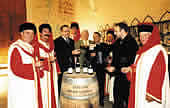
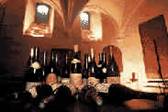
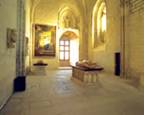
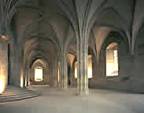
*********************************
One-day tour of Carpentas, Vaison la Romaine, and Cavaillon
(Included in the conference registration fee)
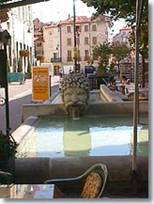 |
CARPENTRAS, City of Art and History Carpentras provides its fortunate visitor with myriad facets as colorful as the ochre-washed façades in the historical city center. Carpentras was originally a city in Gaul, home to the Memini tribe serving as both an acropolis and a market. During the Middle Ages, Carpentras became the capital of the Comtat Venaissin, and was part of the papal territories from the 13th to the 18th centuries. The architecture is often of Italian inspiration, and the heritage of the Jews, protected by the Popes, has influenced Carpentras culture. Discover the rich architectural and historic fabric of this heart shaped city as you wander its narrow, winding streets. |
Hôtel-Dieu (Hospice) The imposing Hôtel Dieu stands at the southern entrance to Carpentras. Built between 1750 and 1761 by architect Antoine d'Allemand, during the administration of Monsignor d'Inguimbert, Bishop of Carpentras after 1735, the Hôtel Dieu displays majestic hospital architecture. The long, solemn western wall, topped by stone flame pots, protects an immense palace which houses an old apothecary in its original state and a Baroque Chapel built of polychrome marble. A magnificent honor staircase leads to the great gallery, lined with 281 paintings in memory of the generous donors who bequeathed their fortunes to the Hotel-Dieu. Visiting the Hôtel-Dieu takes you back to daily life in the 18th century, when its pharmacy was the leading authority on medical theory. |
|
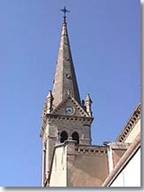 |
Saint Siffrein Cathedral Saint Siffrein Cathedral, named after the 7th century Bishop (and patron) of Carpentras, is a beautiful example of southern Gothic architecture, characterized by unified space and imposing walls. The biggest church in the diocese (58 meters long, its nave 42 meter-long with six ribbed bays), the cathedral was built on top of two previous churches. Vestiges of the 13th century Romanesque church can be seen on the northern side of the apse. Construction of the present cathedral took over a century (1405-1531). |
The Roman Arch Before moving on to the Synagogue, look at Inguimbert Square. In the back part, leaning up against the north side of Saint Siffrein Cathedral, stands the only remaining vestige of the Roman period in Carpentras - the Roman Arch. Before becoming papal property, Carpentras was a Celtic settlement, called Carpentoracte Meminorum, then a Roman town called Forum Neronis. This arch, from the 1st century AD, commemorating Rome's victory over the barbarians, boasts magnificent sculpture showing two captives chained to a trophy. |
|
| Museum Sobirat Installed after WWII in the Hotel Armand de Chateuvieux passed onto the city by Isodore Moricelly, an important patron of Carpentras, the museum reconstructs a typical 18th century comtadine residence with "faience" (glazed earthenware), jars from Moustiers and Marseille as well as beautiful examples of comtadin furniture ("radassiero", chairs, commodes and tables from the 17th, 18th and 19th centuries), many of which were handed down from the Marquis de Sobirats. |
|
|
|
Vaison la Romaine Jewel of Roman Provence as its name indicates, Vaison la Romaine is a must to visit in the Haut Vaucluse. The city, highly interesting from an archaeological point of view, is surrounded by the river Ouveze. On the right bank are two different quarters: the site of the ancient Roman colony and the modern town. Archaeological digs have revealed immense, luxurious, and elaborate Gallo Roman homes.
There were floors in mosaics, marble, marquetry, and statues, ponds, atriums, and private thermal baths, all showing life in Roman times.
One learns that every day life was already very refined and that the Romans attached great importance to artistic creation. On the left bank on top of a rocky spur is the Haute-Ville, originating in the 13th century. In Medieval times the villagers settled in the heights at the foot of the castle to protect themselves from robbers and invasion. Today the castle is in ruins, but Haute-Ville is a picturesque spot to visit. There are little shady squares, ancient doorways, and narrow cobbled streets dotted with superb fountains or lined by the façades of 16th and 18th century mansions. Even if the climb to the top of Haute-Ville seems too steep, you will be rewarded for your efforts by the wonderful view of Vaison, the sumptuous scenery of Mont Ventoux, and views of the famous mountains Dentelles de Montmirail. Here one can journey through 20 centuries of the life of Comtat Venaison and Provence! |
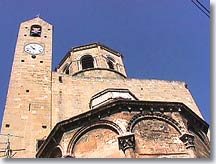 |
Cavaillon Cavaillon is one of the biggest agricultural towns in France and famous for its melons. So fond of them was Alexander Dumas that he offered to supply the municipal library with all his books in exchange for a dozen Cavaillon melons a year. The town is situated under the Colline St. Jacques - a hill which offers magnificent views of the Alpilles mountain range and the Vallee de la Durance. This overlook is accessed by a climb up 16th century steps carved out of solid rock. On the pinnacle is a chapel to St.Roch; further back at the top is the 11th century Chapelle St. Jacques and hermitage and the ruins of an ancient village. Bellow the high cliffs are some Roman arches at the end of the Cours Bournissac, a wide promenade that takes one into the center of town, where the 12th century Canal St. Julien still carries water . There is also an 18th century synagogue founded to accommodate the substantial Jewish population that flourished here until after the Revolution. Posted markers facilitate a walking tour of Vieuz Cavaillon. |
*********************************
Tour B Carcassonne area, September 1-3, 2008
Tour B is offered exclusively to the conference participants and will operate only if there is a minimum of 25 participants. Reservation has to be made before July 1, 2008.
Price of a single room: EUR 328
Price of a double room: EUR 554 (2 persons, EUR 277 each)
Price Includes:
Not included
Payment and cancellation policy:
Full prepayment will be charged from June 1, 2008
Cancellation Policy
Tour A - Before 1 August - full refund less a EUR 5 handling fee. Thereafter - no refund.
Tour B - Before 10 July - full refund less 50%. Thereafter - no refund.
In the event an optional tour is cancelled, a full refund will be made.
Monday, September 1, 2008 After lunch at a restaurant, we will spend the remainder of the afternoon in Fanjeaux. Situated on a rocky headland called the Black Mountain, this town became one of the bastions of the Albigensian heresy at the beginning of the 13th century. St. Dominic initiated his activities to combat heresy here in 1207 and Fanjeaux has had a strong Dominican presence ever since. The wooden beam that safeguarded Dominic's writings, when they were set against those the Cathar bishop, Guilhhabert de Castres, in an "ordeal by fire" is displayed in the 13th century parish church. There is an oratory in the old saddlery of the castle, with memorabilia of St. Dominic, and a Convent of the Preaching Friars. The town also offers visitors a 13th century cross, a 16th century bell tower, an 18th century market, and the Seignadou (sign of God) site, from which St. Dominic is said to have seen a ball of fire falling on Prouilhe. |
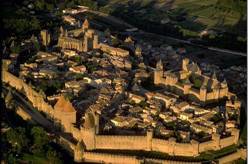 |
| Tuesday, September 2, 2008 Depart after breakfast for Montségur. This commune was one of the last strongholds of the Cathars. The castle now occupying the site is not from the Cathar era, because that fortress was complete razed after its capture in1244. French archeologists refer to the current structure, typical of royal French defensive architecture of the 1600's, as "Montsegur III." We will continue on to Mirepoix and will lunch there or at a restaurant in the surrounding area. Mirepoix is a late 13th century bastide built around one of the loveliest surviving arcaded market squares in the country. Houses dating from the 13th to the 15th centuries border the square, but the highlight is the medieval Maison des Consuls (council house), with its arcaded rafters carved with hundreds of unique portrayals of animals and monsters, caricatures of medieval social groups and professions, and ethnic groups from across the world. Return to Carcassonne for diner on your own. Overnight at Carcassonne. |
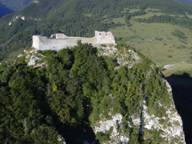 |
| Wednesday, September 3, 2008 We check out of the hotel after breakfasting and drive to Narbonne. This was the first roman colony outside of Italy. Established in 118 BC, it was an important Mediterranean port city until the 14th century, when a change in the course of the Aude River and subsequent silting in left it 15 km from the shore. The capital of the Visigoth province of Septimania in the 8th century, in the 11th and 12th centuries it was home to a Jewish exegetical school important for the development of Zarphatic and Shuadit languages. In the 19th century the town regained some of its vitality with the expansion of its vineyards, and today it is a popular tourist destination with many sites of religious interest. The St. Just and St. Pasteur cathedral (Narbonne Cathedral) and the neighboring Archbishop's Palace form a unique architectural ensemble. Narbonne Cathedral (locus of the second act of Verdi's opera Don Carlos) has remained unfinished since 1272, with only a choir and transept. Its plan required partial demolition of the town wall, but this was never granted through fear of invasion and epidemics. 14th and 15th century cloisters connect the Cathedral to the Archbishops' Palace, home of the two Musées de Narbonne. The Museum of Art has a rich collection of art and design from the 15th to 19th centuries. The Archeological Museum, with rooms dating from the Middle Ages, displays prehistoric to medieval objects uncovered during excavations of various sites in the Aude. |
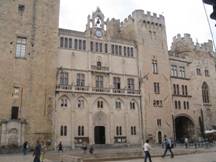 |